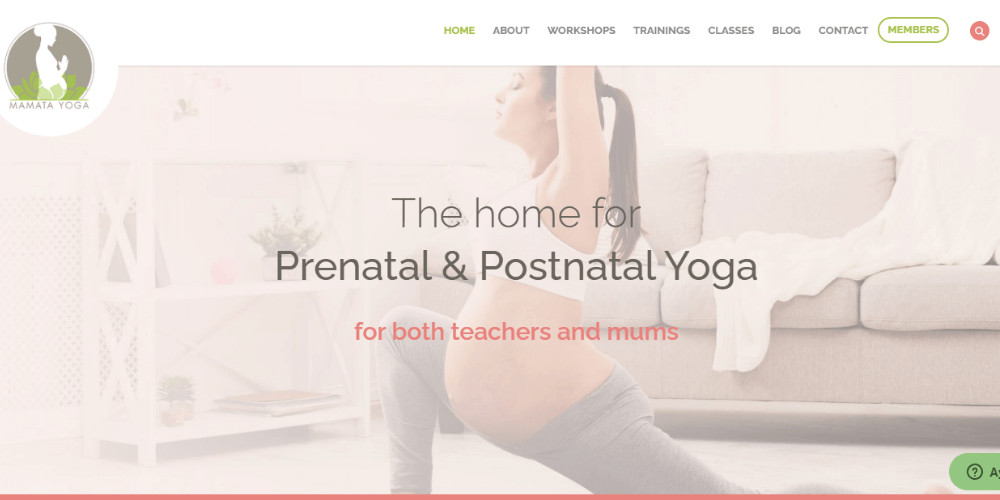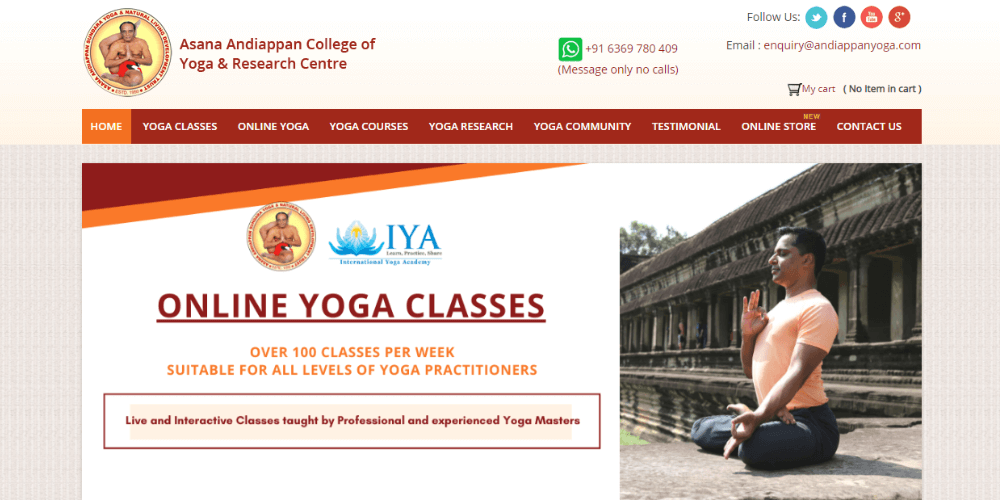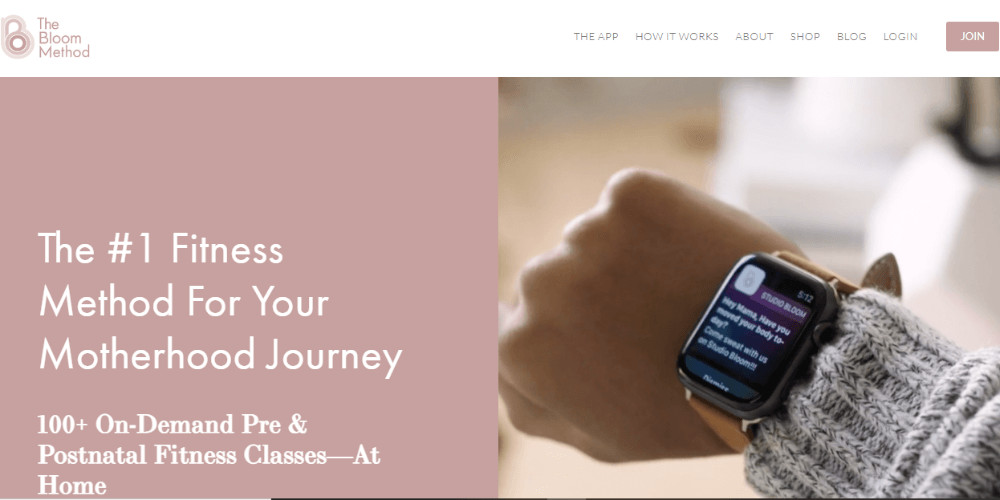mother to be – tips for new moms

I will never forget the moment I found out I was a mother to be- it was on an airplane from London to Dubai when the second blue stripe came on the pregnancy test and left me breathless.
The following six hours until landing felt like six days, and I can vividly recall every second of that altered state of mind I was experiencing. It was the beginning of the most important personal transformation a woman can experience in her life – the passage into motherhood.
tips for pregnant women – yoga, birth coaching, postpartum depression and more.
“Mother is the one who is in command of the space.” – Yogi Bajan
For mothers to be, this transformation is at the same time a beautiful yet terrifying experience.
This is the journey we take for the rest of our lives, one that leaves us feeling more fulfilled, inspired, and stronger as each day passes. However, this strength is built on challenges – and yes, there will come a time for every mother to be when it seems impossible to breakthrough.
Doubts may arise, fears might creep in – questioning ourselves if we can do this?
The answer is always and undoubtedly – yes, you are – for each and every mother to be.
And what you will find once you step into the sacred journey of motherhood is not just the source of incredible strength and love but also a source of genuine empathy and connection to other women.
This article is just another form of this immense support, written by mothers for other mothers to be. We hope it will help you better understand what to expect when you’re expecting – to ease into motherhood and experience its moments more smoothly.
Use the menu below to best navigate this article by clicking directly on the section that sparks your interest.
The article below is divided in two parts: (I) What to expect when you are expecting? & II) Our top tips and resources for a mother to be
Part 1 -What to expect when you’re expecting?
• What to expect when you’re expecting – most common body/mind / emotional changes
• Explanation of hormones behind pregnancy and postpartum changes
Part 2 – Our top tips and resources for mother to be
1. Explore the benefits of yoga during pregnancy
• Benefits of yoga for pregnancy
• Yoga modifications in pregnancy coaching (general and yoga for pregnancy first/second / third-trimester tips)
• Best yogi resources for a mother to be (overview of yoga for pregnancy teacher training)
Brett Larkin Uplifted Prenatal
mamatayoga.com
andiappanyoga.com
islandprenatalyoga.com
brettlarkin.com
2. Consider pregnancy coaching for mother to be
• What is pregnancy coaching and what to look out for a mother to be
soniaribas.com
3. First-time pregnancy? Prepare for upcoming challenges with an online course
• How can online courses support first-time pregnancy coaching?
• 3 most important areas: birth, lactation, parenting
tinyhood.com
courses.weehuman.com
thepositivebirthcompany.co.uk
4. Stay fit during pregnancy coaching for mother to be
• Tips on staying safe while exercising during pregnancy coaching
thebloommethod.com
fitpregnancyclub.com
5. Prepare for postpartum with natural remedies
• Understand what is postpartum
• Best natural remedies for postpartum mothers
• Natural treatments for postpartum depression
6. Single mother? Reach out for a mother to be support!
• Support tips for single mothers
>>> Read more about>>> The gift of being a mother
PART 1 – Tips and resources for a mother to be – what to expect when you’re expecting

So… What to expect when you’re expecting?
The sacred journey of motherhood begins with one of the most energetically rich experiences in a woman’s life – being pregnant. It is a unique experience for each woman – a self-discovery journey and re-connection to the divine feminine inside.
However, it is also a roller coaster of emotions, body changes, and challenges, which can sometimes feel overwhelming.
Being mothers ourselves, we understand how beautiful and challenging at the same time it can be, as well as how important it is to find the proper support.
Once you become pregnant, you will most probably be swept away by the amount of good-hearted advice aimed towards you.
Also, digital information overload usually just adds to the confusion.
And with pregnancy and postpartum markets almost saturated, it can be challenging to find that critical piece of information or the proper support that fits your needs.
Hence, in this article, we are honestly speaking on what to expect when you’re expecting and provide you with a concise overview of the most helpful tips and resources for a mother to be.
It is fair to say that there is no experience more transforming or powerful than becoming a mother to be and having no experience more challenging. Every pregnancy is a unique journey, and what your family and friends went through might have little or nothing to do with what you are experiencing.
However, there is a common factor behind each pregnancy – a potent cocktail of several chemicals we call hormones – and understanding these hormonal fluctuations will help you deal with the situation accordingly.
Explanation of hormones behind pregnancy and postpartum changes
The main actors are estrogen and progesterone, whose levels rise steadily during pregnancy.
Although both hormones are associated with different physical and emotional challenges women experience during their pregnancy, they are also vital in creating dopamine and serotonin, two neurotransmitters in the brain responsible for feelings of happiness and calm.
During birth, a significant rise in hormones such as oxytocin and endorphins occurs, helping women deal with the birthing process, encouraging nurturing and loving feelings, and promoting emotional connection to their newborns.
However, a couple of days after the delivery, as the body releases the placenta, you may expect a sudden hormonal swing.
Estrogen, progesterone, and endorphins will plummet, while the other two hormones, prolactin, and oxytocin start to surge.
This sudden change in hormonal levels is responsible for postpartum blues and sometimes even postpartum depression.
The first three months postpartum can be incredibly challenging, as women go through high prolactin production, no progesterone, and subsequently lower dopamine. If we add lack of sleep on top, it is no wonder changes in energy, moods, and emotions can be pretty overwhelming.
Six months postpartum is a reasonable estimate for a mother to be when the hormones will go back to normal.
Around this time, a decrease in prolactin influences a natural reduction in breast milk production, while estrogen and progesterone slowly reset to pre-pregnancy levels.
Here is a closer look at what to expect when you’re expecting due to hormonal changes.
Estrogen – the primary female hormone
Along with progesterone, estrogen is one of the two main hormones that kick-starts your pregnancy.
Produced by the ovaries and later by the placenta, estrogen helps regulate other vital hormones (including progesterone), maintains endometrial lining, helps develop milk ducts, promotes blood flow, and eventually helps to grow the baby.
What to expect when you’re expecting body and mood changes due to heightened estrogen levels during your pregnancy?
• Increase in nausea (also caused by another hormone – hCG)
• Tender breasts due to milk duct development
• Stuffy nose due to an increase in blood flow
• Urgent and frequent need to pee due to increase in blood flow
• Dilated skin blood vessels
• Hyperpigmentation (brown nipples, melasma, brown patches)
• That healthy pregnancy glow
Progesterone – the pregnancy hormone
Progesterone is known as the “pregnancy hormone, “as it helps the fertilized egg be implanted in the uterus to establish a pregnancy, also acting as a muscle relaxant and preventing your uterus from contracting until the onset of labor.
Later it supports the fetus as it grows and helps maintain a healthy pregnancy.
Here is what to expect when you’re expecting due to high levels of progesterone during your pregnancy:
• Mood swings – including anxiety and postpartum depression (progesterone is also associated with that irritability during the pre-menstrual period
• Gastrointestinal symptoms such as constipation, acid reflux, gas, heartburn
• Loose joints and ligaments (also caused by another hormone – Relaxin)
• Swollen gums
• Skin breakouts
• Increased hair growth
Oxytocin – the hormone of love
Known as the “hormone of love,” oxytocin is what makes us feel good and nurturing.
It increases during pregnancy and is critical when it comes to labor and delivery, stimulating contractions. Afterward, oxytocin will remain on higher levels, helping shrink the uterus down in size and supporting milk release in breastfeeding
So what to expect when you’re expecting a rise in oxytocin levels?
• Mild euphoria weeks before, during, and just after the birth
• Strong nesting behavior
• The Mother-baby bond is emphasized through physical touch and breastfeeding.
Endorphins – the happy hormones
These brain’s naturally happy hormones increase by the end of pregnancy and surge during birth to promote natural pain relief. When you’re expecting a surge in endorphins during delivery, something to expect is possible altered states of consciousness to help you deal with the process.
However, a significant drop in endorphins days after birth may lead to so-called baby blues – feelings of moodiness and irritability you might experience throughout your first weeks after delivery.
Prolactin – the mothering hormone
Production of prolactin during and after labor is essential for preparing a mother to be body for breastfeeding. In a nutshell, prolactin tells the milk glands in your breasts to make more breast milk.
High levels of prolactin are believed to foster caretaking behaviors and adjustment to being a mother. In combination with low estrogen levels postpartum, prolactin also keeps your milk supply up and your period away during breastfeeding.
Other relevant hormones
Here are some additional body and mood changes you can expect when you’re expecting due to other relevant hormones such as human chorionic gonadotropin (hCG), relaxin, human placental lactogen (hPL), and thyroid hormones:
• You might feel increased nausea and vomiting during the first trimester due to one hormone exclusive only to pregnancy – human chorionic gonadotropin (hCG)
• Your muscles, joints, and ligaments will be extra relaxed during the pregnancy due to a relaxin hormone, which can also make you feel off-balance and wobbly.
• Human placental lactogen (hPL) helps adjust your metabolism to feed your baby during pregnancy. It also helps make colostrum (antibody pre-breast milk). However, it can also lead to insulin resistance, resulting in gestational diabetes in the second trimester.
• Thyroid hormones also increase during pregnancy to support the baby’s neural and bone development. As hCG and estrogen can stimulate the thyroid even more, it is essential to check with your doctor during the first trimester if the gland is balanced and optimally performing its duties.
PART 2 – Our top tips and resources for mother to be

As you understand what to expect when you’re expecting, it is essential to emphasize self-care and nurturing.
The holistic approach to preserve your physical, emotional, and mental health during this time might be the best gift you give to both yourself and your baby. And the best thing is – you do not have to do it alone.
As you are going through a significant transformation, do not fear to reach out for support.
Remember that you already intuitively know what is best for you and your child – all the support you will be getting should be structured around this core belief, merely helping you tap into the inner wisdom that is already there.
With so many different support options out there, it has never been easier to find the one tailored to your specific needs.
Whether you prefer yoga, one-on-one pregnancy coaching, or are in need of more detailed support, we have singled out top tips and resources for a mother to be to help you reconnect to and refine their inner guidance and intuition.
1. Explore the benefits of yoga for a mother to be
Our first and foremost tip for the mother to be is to explore the benefits of yoga during pregnancy and postpartum. Yoga is an entirely holistic approach that will support your physical, emotional, and mental wellbeing.
And it is not just about asanas – yoga is a vast science full of different tools you can leverage – such as breathing techniques for labor and birth preparation, as well as various meditation techniques for managing mood swings.
With yoga, you can tailor the unique practice that will support you through your pregnancy and postpartum.
Some of the proven benefits you can expect when you’re expecting and practicing yoga include:
• Relieving physical symptoms of pregnancy such as lower back pain, nausea, headaches, or breath shortness
• Toning relevant muscle groups such as pelvic core and abdominal muscles for easier birth and recovery
• Preparing for labor and delivery with yogic breathing and relaxation techniques
• Managing mood swings, including stress, anxiety, and postpartum baby blues
• Improving sleep
• Promoting connection with your baby through deepened awareness
Yoga modifications in pregnancy – best tips to follow for a mother to be
When practicing yoga asanas in pregnancy, mothers should remember that modifications are not about making the poses easier but safer and more accessible.
It is all about listening to your body, and the extent of yoga modifications in pregnancy will depend on whether you are a beginner or have an established yoga practice and how far along with the pregnancy you are.
Here are some general yoga modifications in pregnancy:
• Avoid closed twists, deep forward and backbends, not to compress the uterus or overstretch deep abdominal muscles
• Avoid poses done on the belly
• Avoid hot yoga and be mindful about overheating in a regular yoga class.
• Avoid any pranayama that can generate internal heat quickly (such as bhastrika)
• Avoid breath retention (kumbhaka)
• Take care with lying on your back, as the baby pressing on the inferior vena cava can suddenly lower your blood pressure and make you feel dizzy or nauseous
• Switch Savasana for side-lying Savasana
• Careful with general risk of overstretching to avoid pelvic/joint instability and pulled ligaments
• Rest in child pose or comfortable seated position whenever needed
• Feel free to use yoga props such as blankets and bolsters to support you whenever necessary
As your pregnancy develops, you will notice how each trimester imposes different challenges and requires additional support. We have singled out the most relevant yoga tips per trimester.
Yoga for a mother to be first-trimester tips:
• The early part of the first trimester has the highest risk for miscarriage, so take extra care and consult with your physician before engaging in any physical activities.
• Since the first trimester is also known as a full-on exhaustion phase, modify your asanas and take breaks as much as needed.
• If you feel more fatigued and/or suffering from morning sickness, replace the downward dog with cat-cow positioning, as having your head below your belly can make you feel more nauseous.
• Substitute close twists with an open variation – twist away from your bent leg rather than towards it and focus more on twisting the shoulders and upper back rather than lower back
• If you are comfortable with inversion, it is not harmful to move your practice near the wall.
Yoga for a mother to be second-trimester tips:
• If you are enjoying the energy surge typical for the second trimester, focus on the combination of strengthening and stretching that will help you prepare for labor.
• For strengthening, we recommend standing poses and for stretching various hip-openers.
• Bring your legs wider apart in both standing and sitting asanas to create space for your belly.
• If you were still doing poses on your belly during the first trimester, now is the time to substitute those for a gentle version of cat-cow
• Take care with backbends as well, not to put unwanted pressure on the abdomen and avoid diastasis recti.
Yoga for a mother to be third-trimester tips:
• Take care with inversions, as it is generally recommended to avoid them in the third trimester.
• Practice cat-cow for lower back pain
• Practice hip openers to promote the quality of the release
• As the due date approaches, focus more on breathing and meditation to feel more centered and prepared for birth
• Consider learning more about breath control (pranayama), as it can help you during labor and birth
Read also >>> a guide to a safe and fun practice in pregnancy
Best resources for the yogi mother to be – online yoga for pregnancy teacher training
If you want to know more on what to expect when you’re expecting and how yoga can best support you on this journey; or are simply looking to adjust or deepen your yoga practice as a mother-to-be, we have selected the best resources for you.
Since yoga is such a vast science, it is worth diving deeper and exploring its numerous benefits as a mother-to-be. Hence, we have compiled an overview of the best online yoga for a mother to be teacher training to support you throughout your journey.
The investment of your energy, time, and money will pay off long term, as it is a genuinely holistic approach to your wellbeing.
Deepening your yoga practice will generate a deeper connection to yourself and your baby, provide you with a safe environment to grow, and equip you with many yogic tools and practices you can use your entire lifetime
Here is the list of selected online yoga for a mother to be teacher training:
Best overall – Mamata Yoga

Mamata Yoga’s 85h online teacher training consists of 3 modules covering (a) pregnancy, (b) conscious couples & birthing wisdom, and (c) postpartum education.
This comprehensive course offering stands out due to various spiritual modalities – such as reiki, Ayurveda, subtle energy movement, reflexology, pelvic floor exercises, and Thai yoga massage.
As a result, participants are educated in a unique holistic approach to pregnancy with a yoga science foundation.
The first module covers yoga during pregnancy, focusing on anatomy and physiology, physical and emotional changes, and related remedies (asana, reiki, Ayurveda, essential oils).
The second module refers to partner prenatal yoga and various tools to support labor and birth (meditation, pranayama, and mantras). The third module focuses on holistic postnatal healing and connection, incorporating selected yoga techniques for fulfilling motherhood.
The course aims primarily towards yoga teachers, but other pregnancy specialists and mothers looking to deepen their own practice are invited to join. It is registered with Yoga Alliance and divided into 70h of hands-on training, with an additional 15h of practicum and observation hours required to complete the total.
Included in this online yoga for a mother to be teacher training:
• Format: both self-paced (to be completed within 6 months) or live via Zoom
• Price: Paid In full $1,111
• Installments: 2 payments of $550 or 3 payments of $370
• Duration: 85 Hours
• Live Zoom classes (can be accessed later offline)
• Private Zoom meetings
• Free access to online prenatal + postnatal yoga classes on the membership page for 6 months
Best traditional – Andiappan Yoga

If you prefer a more traditional approach, this online yoga for pregnancy teacher training will provide mothers with a deep insight into adapting traditional yogic practices during various stages of pregnancy and early motherhood.
This course is conducted by conventional yoga schools with a strong heritage.
It is a collaboration between the International Yoga Academy (IYA) Hong Kong and the Asana Andiappan College of Yoga and Research Centre (AACRC) India.
We particularly like this online yoga for a mother to be teacher training because it offers a solid foundational knowledge of physiology and anatomy in pregnancy, allowing the students to tailor-make yoga sequences for various body types and customize yogic practices individual physical and mental states.
The course consists of three modules: (I) Anatomical and physiological fundamentals of pregnancy; (II) Application of yoga for various conditions during pregnancy and (III) Structuring and teaching a prenatal yoga class.
This online yoga for pregnancy teacher training aims at everyone: yoga teachers, pregnancy specialists, and mothers. All the classes are conducted as live interactive sessions, and all required practicum can be submitted online.
It is accredited by various organizations, including India, the Indian Yoga Federation, Vedic Wellness University (Florida, USA), and Yoga Alliance USA. If you decide to apply for registration with Yoga Alliance upon finishing the course, you will be eligible for an additional 100h of teacher training.
Included in this online yoga for a mother to be teacher training:
• Format: Live (note: class timings are according to Indian Standard Time (IST) = GMT +5:30h, so be mindful of time difference)
• Price: Paid In full $1,300
• Installments: Not stated
Duration: 100 Hours:
• Theory and Practical Classes (16 classes of total 54h)
• Recommended Group Yoga Classes (15h)
• 15 Andiappan Yoga Classes (30h)
• 5 Community teaching / assistant / observation classes (5h)
Best Bundle – Island Prenatal Yoga

We love this online yoga for pregnancy teacher training because it includes prenatal, postnatal, and kids yoga. This bundled option comprises 3 different courses that are self-paced, allowing for sometimes much-needed flexibility.
The content is condensed and well organized around three courses: (I) Prenatal yoga course focuses on yoga modifications during pregnancy, (II) Postnatal yoga course focuses on restorative practices as well as a mother to be & baby yoga, and (III) Kids yoga course focuses on how to apply yogic techniques to children.
This online yoga for a mother to be teacher training is aimed primarily at yoga teachers and regular yoga practitioners, but other professionals are also invited to join.
Please note this course is registered with Yoga Alliance Continuing Education for an additional 75h and will certify you to teach these areas but not give you the RPYT (registered prenatal yoga teacher) status. However, Island Yoga also offers an additional 85h Prenatal Yoga Training that is qualified to provide you with RPYT status and offers an option to upgrade.
• Format: Self-paced
• Price: Paid In full $625
• Installments: Available
• Duration: 75h of Yoga Alliance Continuing Education (option to upgrade to 85h RPYT available)
• Live webinars for Q & A
• One-on-one support and feedback after each lesson submission
Best for beginners – Uplifted Pregnant & Powerful by Brett Larkin Yoga

Brett Larkin’s Uplifted Pregnant and Powerful will help mothers-to-be tap into their inner knowledge, which is already deep inside us as women and teachers. In addition to sculpting and stretching, these classes include mental work, mantras, and statements, to help conquer any anxiety about pregnancy and birth.
The course is primarily aimed as a personal journey for the mother to be, but there is also a Teacher’s Edition for online yoga for pregnancy teacher training.
Prenatal modules include Hatha, Vinyasa & Kundalini-inspired prenatal yoga routines (asana sequences, meditations, mantras, mudras) to strengthen the physical and subtle body for labor. Postnatal module includes lectures on establishing a solid yogic routine and yoga Nidra and 40-day kriya.
Teacher’s Edition includes additional tutorials aimed specifically to enhance prenatal teaching and offering for certified yoga teachers. These will add 10 non-contact hours with Yoga Alliance Continuing Education.
• Format: Self-paced
• Price: Paid In full $137 for Pregnant & Powerful classes or $159 for Teacher’s Edition
• Installments: Not stated
• Website: brettlarkin.com
2. Consider pregnancy coaching
If you feel like one-on-one support to prepare you for motherhood is what you need, we recommend hiring a pregnancy coach.
These trained professionals can support you in various areas related to pregnancy, birth, and postpartum: health, nutrition, wellness, childbirth preparation, emotional support, breastfeeding, parenting, postpartum healing, infant sleep, and more.
Some will support you during your whole journey, and some will be available at specific times of need.
Whatever area you want to focus on, pregnancy coaching will help you navigate pregnancy and postpartum, smoothing into and supporting your transformation.
The individualized approach will offer fundamental strategies catered for you specifically, as there is no one-size-fits-all solution. Additionally, these newly adapted habits may just create a lifelong positive change in your lifestyle and mindset.
Here are some of the practical tips to look out for when choosing the right pregnancy coaching option:
• Ensure you have clarity on what you need support with and which goals you are trying to achieve before looking for a mother to be coach.
• Do thorough research and investigate details of their experience, certifications, client testimonials, and tool kit used
• Have an initial conversation with at least two or three different pregnancy coaching to develop a sense of a baseline
• Since this approach is fully personalized, make sure there is chemistry and choose mainly with your intuition.
First-time pregnancy? We have selected some best pregnancy coaching resources for mother to be.
Prepare for upcoming challenges with an online course
If you are a first-time mother-to-be and don’t know what to expect when you’re expecting, the best way to battle any potential challenge is to be well-prepared beforehand.
Timely education is a prerequisite for smoother navigation through all critical topics – such as childbirth, lactation, and newborn parenting. In that way, when a specific hurdle hits, you will be equipped with the knowledge and different tools to tackle it fast and efficiently.
In today’s challenging times, it is essential for each mother to be to feel safe and comfortable during her pregnancy coaching, especially when interacting with others.
That is why online courses have experienced such a surge in demand. You can now get all the information on what to expect when you’re expecting the comfort of your own home and at your own pace.
We have selected the best online courses for first-time mother to be:
Best on Parenting – Tinyhood’s Baby 101: The Parenting Prerequisite

A Tinyhood’s flagship course, Baby 101: The Parenting Prerequisite, will walk you through everything you need to know about parenting.
It is a curated selection of the most essential information covering 4 topics: breastfeeding, sleep, infant safety, and newborn care.
The course is designed by parents and experienced experts and offers flexible access for 2 years. You will also get access to private Q&A forums to save yourself hours of continuous internet research.
• Topics covered: breastfeeding, sleep, infant safety, and newborn care
• Format: Total 15 classes
• Price: $160
• Additional: Q&A forum moderated by experts
Best Bundle – Weehuman’s Best New Parent Program

This Bundle will give you access to all Weehuman’s courses, structured around 4 topics: (I) Modern childbirth, (II) Newborn care, (III) Mind & body wellness, and (IV) Breastfeeding.
We love this course because it offers plenty of essential information in an easy-to-digest manner.
In Modern childbirth, mothers-to-be will get everything they need to be prepared for birth, whether natural, epidural, induction, or cesarean.
Newborn care will teach you how to learn baby’s cues, set up healthy rhythms and routines, keep your baby safe, developmental milestones, and much more.
Mind and body wellness will provide you with relaxation, breathing, and meditation techniques while Breastfeeding courses will help you set up for success in breastfeeding your baby.
On top of on-demand lessons, you will get the opportunity to engage in live virtual sessions for personal connection & professional support.
• Topics covered: modern childbirth, newborn care, mind & body wellness, and breastfeeding.
• Format: Full access to ALL classes by Weehuman
• Price: $99
• Additional: Live sessions
Best for birth preparation – The Hypnobirthing Digital Pack by Positive Birth Company

Hypnobirthing is an evidence-based approach to birth that seeks to empower the mother to be with knowledge, practical tools, and support and enable them to have a positive birth experience; however, they choose to bring their baby into the world.
Hypnobirthing is for everyone and every birth; you don’t need to subscribe to any school of thought or be planning any particular type of delivery.
Hypnobirthing gives mothers the benefit of being better informed about their body and options and providing them with a practical toolkit to use in labor and birth.
This Hypnobirthing Digital Pack by Positive Birth Company is a fully comprehensive hypnobirthing antenatal course with 43 videos covering different topics, such as the physiology of birth, relaxation techniques, induction, and cesarean delivery, the stages of natural labor, the benefits of skin-to-skin, delayed cord and many more.
You will get access to guided meditations, positive affirmations, and breathing practice for regular listening, as well as to the birth preference template.
This course will also include a fully comprehensive Infant Breastfeeding Guide, covering everything you need to know about breastfeeding.
• Topics covered: hypnobirthing and breastfeeding.
• Format: 6+ hours of video content (over 43 videos)
• Price: $39
• Additional: Access to the private Facebook group
3. Stay fit during pregnancy coaching
One of the most effective remedies for discomfort during pregnancy is exercise. While pregnant, working out can help ease back and pelvic pain, fight fatigue, improve sleep, and relieve constipation.
Besides, staying fit during pregnancy will speed up your physical recovery postpartum.
In case you didn’t have a regular exercise routine before pregnancy, don’t worry – it is still safe to start now, as long as you follow some pregnancy safety rules and align with your practitioner. Please mind how some conditions – such as anemia, preeclampsia, placenta previa, and incompetent cervix – will require mothers-to-be to avoid physical exercise.
What are the best ways to stay fit during pregnancy coaching? Yoga, Pilates, dance, swimming, walking, jogging, aerobics class – you name it! One general rule to follow is to listen to your body – it will know the best what feels good and what might be a bit too much.
Set a goal for yourself that feels comfortable, and remember now is not the time to over-do it. In case you feel any prolonged discomfort – such as unusual pain, sudden headache, dizziness, increased swelling, premature contractions, or bleeding – contact your practitioner immediately.
Here are some tips for a mother to be on how to stay safe while staying fit during pregnancy:
• Be careful about overexerting, as it can lead to dehydration and lack of oxygen – it is ok to hear yourself breathing more heavily than usual, but you should never be so out of breath that you cannot talk.
• Avoid contact sports, sports with a higher risk of falling (skiing, snowboarding, ice-skating) and abdominal injury (horseback riding), as well as sports involving higher altitude change (diving)
• Make sure to stay cool – avoid hot yoga, saunas, hot tubs, and exercising outside in hot weather.
• Start slowly, make sure to warm up and cool down and maintain at or below your pre-pregnancy fitness level.
• Adjust your moves – in addition to sticking to whatever feels comfortable, make sure to avoid moves that can increase diastasis recti, as well as the ones that can lead to overstretching
We have selected the best online resources for staying fit as a mother to be.
Best pregnancy and postpartum fitness – The Bloom Method

The Bloom Method is an on-demand online fitness studio that strives to empower both mothers and postpartum mothers with safe and sweaty workouts. Whether you want to stay fit during your pregnancy, train for birth, or heal and re-strengthen postpartum, with Studio Bloom, you will find what you need with only one subscription.
What we love about this method is that it puts a significant focus on pregnancy-specific issues throughout the whole offering – such as preventing and healing abdominal separation (diastasis recti), healing pelvic floor, and treating incontinence.
Their system uses specific diaphragmatic breathing exercises and proper core engagement to keep the abdominal muscles strong as the belly grows throughout pregnancy, rehabs postpartum, and even gains the strength required to prepare the body for as a mother to be.
Studio Bloom offers a comprehensive prenatal program designed to prepare you for your biggest marathon yet – birth. Here you will find exercises catered specifically to decrease lower back pain, pelvic floor imbalances, abdominal separation, and longer pushing times.
After delivery, you can benefit from Studio Bloom’s postnatal fitness method designed to help you heal, reconnect with your core and safely build strength. In case you are recovering from a C-section, Studio Bloom has the selection of workouts to support you from the first week postpartum.
Studio Bloom offers both monthly and yearly subscriptions for 100+ videos accessible from any device. You can also try before you join, as they offer 3 free classes before any confirmed subscription.
• Price: Monthly 29$ (19$ for the first month), yearly 240$
• Format: 100+ of video content on-demand
• Additional: community support, nutrition, and recipes, meditation, mobility, and stretching
Best high intense exercise – Fit Pregnancy Club.

Fit Pregnancy Club offers both live and on-demand classes explicitly developed for pregnancy and postpartum.
These music-driven, strength-cardio classes are designed to keep you safe in everything you do through their signature Pump & Kegel® method focused on core and pelvic floor activation.
Fit Pregnancy Club offers three different levels – “Chill” for more focus on breath and functional movements, “Energizing” for more cardio and strength, and “Intense” for more challenging work. All the fitness-crazy mother to be that have had an established, intense workout routine before their pregnancy will find their levels of intensity satisfying yet safe to perform.
Different payment plans are available, from single streaming class to unlimited access to both live and on-demand (pre-recorded) classes. They offer a 7-day free trial and strive to keep their offering fresh, with 8 new workouts delivered every month.
• Price: Monthly 19.99$, Quarterly 50$, 9 months 159.99$
• Format: Live and on-demand
• Additional: Various live events (e.g., NewBorn Sleep, New Mother Support Groups, Prenatal Nutrition)
5. Prepare for postpartum with natural remedies
The transition from pregnancy to postpartum comes with long-awaited relief in terms of finally holding your baby, but also with a whole new set of challenges. As with pregnancy and birth, it is also crucial for mothers to prepare for this period in advance.
Understanding what to expect in terms of physical recovery, hormonal changes, and emotional ups and downs will help you cope with postpartum challenges while cultivating more self-acceptance and self-love.
No matter how you gave birth, the first 40 days are considered a “recovery” period. This tradition is crucial to holding space for women’s healing, promoting physical recovery, and milk production.
No matter how you gave birth, in this period, you can expect your body to do most of the healing, as well as to cope with other common postpartum symptoms, such as postpartum bleeding, constipation, perineal pain, sore nipples, and backaches.
In this period, it is essential to resist your temptation to overdo things. Getting enough rest should be your priority, so sleep whenever your baby sleeps, asking family and friends for help with the baby and around the house, and limiting visitors.
Don’t be afraid to set boundaries on anything that feels over-exhausting or uncomfortable. Make sure to eat well and stay hydrated to properly nourish your body.
We recommend stocking up with natural foods and remedies before birth to have everything at hand during the recovery period. Here are some of the best postpartum natural remedies for mother to be:
• Choose wholesome, nourishing broths or soups as your first food after delivery – add seaweed, ginger, turmeric, or basil for an extra boost of goodness.
• Drink plenty of coconut water – it supports hydration, digestion, reduces blood sugar and high blood pressure in addition to its antioxidant, antimicrobial and anti-inflammatory properties.
• Take herbal & Epsom salt baths for perineum recovery – you can use calendula, comfrey, chamomile, lavender, red raspberry leaf, or yarrow.
• Stock up on witch hazel – this anti-inflammatory and antiseptic astringent is best used in combination with ice packs or applied directly with a peri bottle or small spray bottle.
• If you are breastfeeding, drink plenty of lactation tea – Alfalfa, blessed thistle, fennel, fenugreek, goat’s rue, milk thistle, and stinging nettle are some of the most common herbs with lactogenic properties.
• Use essential oils for promoting relaxation – lavender, chamomile, frankincense, or clary sage are some of the favorite choices of postpartum mothers.
• Stock your postpartum pantry with nourishing, tissue repairing ingredients such as ghee, nettle, raspberry, coconut oil, sesame oil, nuts, and flax seeds – as well as a lot of dark greens in your fridge and various high-fiber foods that will help fight constipation
Natural treatments for postpartum depression

After delivery, your body goes through extreme hormonal fluctuation – your estrogen and progesterone levels will plummet, as well as all those endorphins that have supported you during birth. Your body will feel exhausted from delivery, you might feel stressed and anxious about your new role as a mother, you might experience difficulties breastfeeding.
With all this combined, it is no wonder almost 80% of mother to be experience so-called “baby blues,” which likely occurs a couple of days after birth. The symptoms might include sudden mood swings, loss of appetite, or feeling irritable, overwhelmed, and anxious.
For the majority of women, these symptoms will subside around two weeks after delivery. However, if such feelings persist, you might be suffering from postpartum depression, which occurs in roughly 10-15% of mother to be. Remember – the main distinguishing factor is the timeframe in which these symptoms occur, which can stretch up to one year after delivery.
Symptoms of postpartum depression are much more severe and don’t go away quickly. If you experience aggression, extreme stress, and detachment from the baby, it is imperative to ask for help and get proper treatment.
In addition to reaching out to a healthcare specialist for proper treatment, natural treatments may also help ease the symptoms of postpartum depression. These are in no way to be considered replacements for prescribed therapy or medications; however, they can work in tandem to help manage symptoms of postpartum depression.
Here are several ways to care for postpartum depression with natural treatments.
1. Take vitamins and supplements
As your nutritional stores of vitamins and minerals get depleted during pregnancy and postpartum, it is recommended to take vitamins and supplements. Some research shows that a lower intake of Omega-3 fatty acids and folic acids may be associated with developing postpartum depression in the first place.
Although more research is necessary, it is generally recommended to take supplements or increase foods rich in Omega-3 fatty acids and folic acids. These include flax and chia seeds, salmon and other fatty fish for Omega-3, legumes, citrus, leafy greens, and Brussels sprouts for folic acid.
Make sure to discuss with your doctor before taking any of these supplements and get suggestions on the proper dosage.
2. Consider herbal supplements
St. John’s wort (Hypericum perforatum) has been commonly taught to treat postpartum depression. However, there has been some controversy as it has proven contraindications with other medicine (including antidepressants, birth control pills, cyclosporine, and digoxin) and might not be safe if you are breastfeeding (in fact, some breastfeeding infants whose mothers took St. John’s wort had higher instances of colic and drowsiness).
Other herbal supplements that might help fight postpartum depression include motherwort, Rhodiola, ginseng, saffron, and chamomile.
Please note that any herbal supplements should be approached with caution. These are not regulated and, in general, not accepted by the medical community as proven therapies for postpartum depression; hence they should never be taken as a replacement for any prescribed medication. Please discuss with your doctor before taking.
6. Single mother? Reach out for the mother to be support!
The notion of what a traditional family looks like has been changing in the new millennium. More and more women choose to be single parents each year, and what once was a stigma is considered a superpower. If you are raising a child on your own, you are in good company. However, solo parenting can often be stressful and demanding, and when those times come, do not be afraid to reach out for support.
Here are 5 simple support tips for single mothers to reduce stress and help you thrive:
• Build your own support network – although it is tempting for all those superwomen out there to handle everything alone, ask your family and friends for help.
• Outsource everything you can afford – if finances allow, outsource your household chores and/or hire a trusted sitter to free up your schedule and energy
• Maintain a daily routine – try to schedule meals, walks, bedtimes, and other family functions at regular hours, as it will help you feel more organized.
• Take time for yourself – now more than ever is quality “me time” so important to keep yourself sane and positive.
• Boost your finances – get acquainted with all forms of financial assistance you are entitled to, from child support to various government benefits (TANF or WIC), local sources of assistance (for more information, dial 2-1-1), and community organizations in your area.
In essence
Navigating motherhood is definitely not easy. However, each mother to be will discover she has superpowers and an immense support network designed to help her thrive. We aimed this article as a comprehensive go-to roadmap, assisting the mother to be in finding the proper support for those challenging times. Remember, many of us have been there and have found our ways out of there, feeling more stronger, connected, and empowered to hold space for our babies.
You are not alone in this sacred journey. Millions of women have walked this path before you, and millions more are yet to come. We each leave our trace in the collective sacred feminine – the immense source of inspiration and creation – and the driving force behind every mother to be.



